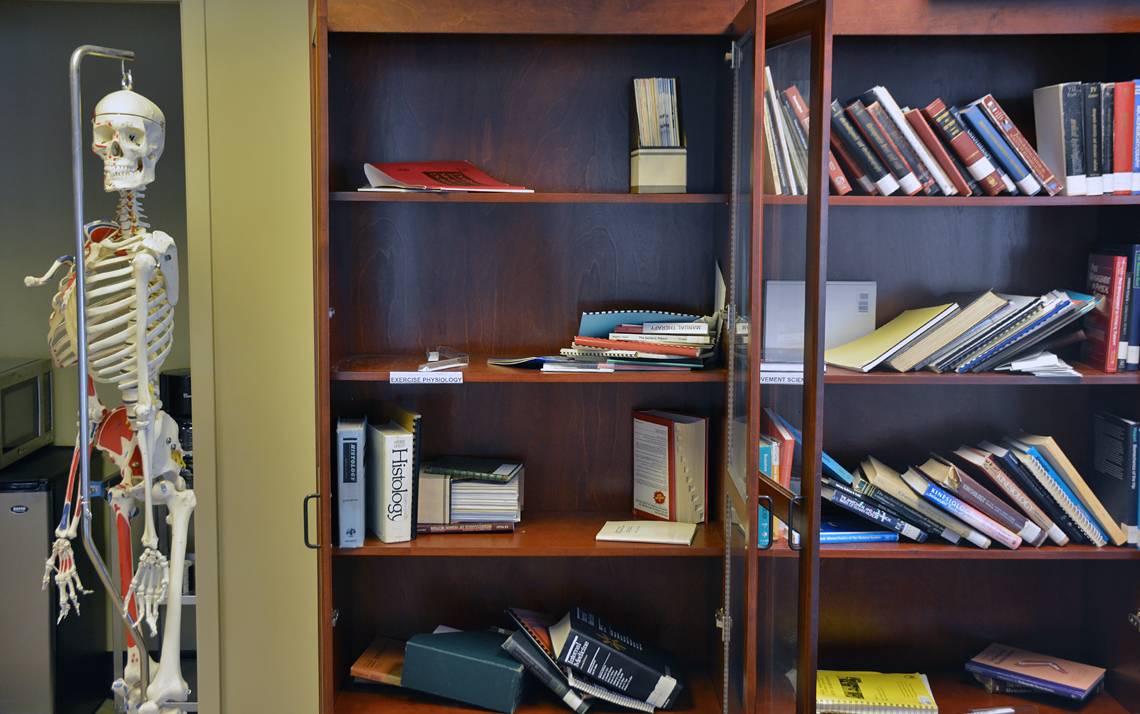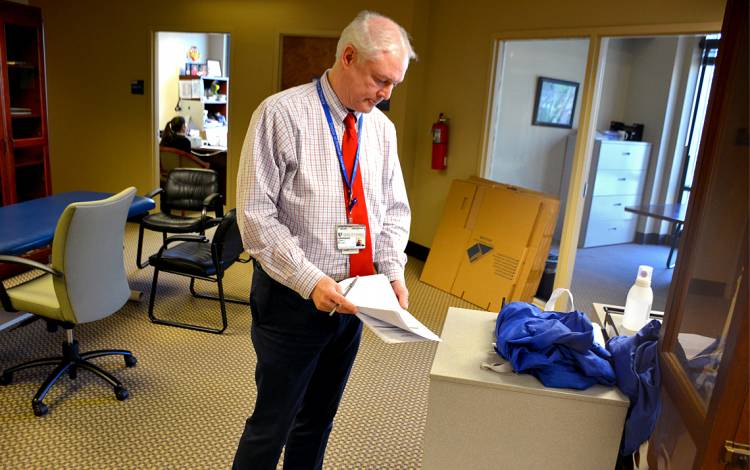Marie Kondo ‘Crazies’
Duke employees use Kondo’s tidying up tips to declutter workspaces

As employees in the Doctor of Physical Therapy Division prepare to move offices from W. Main Street to Trent Drive, they're using lessons taught by organizing expert Marie Kondo in her book, “The Life-Changing Magic of Tidying Up,” which has sold about 1.5 million copies.
The division is shredding old papers and donating textbooks and journals.
"It can be a challenge to give away things we’ve held onto for so long, but we need to take advantage of our office move to free up some space," said John McCall, vice chief of administration and operations for the Doctor of Physical Therapy Division.
In addition to the bestseller, Kondo is the star of the Netflix series “Tidying Up with Marie Kondo,” in which she helps clients clear out clutter and find joy in their lives. Kondo’s central tips, known as the “KonMari” method, encourage people to discard items, tidy by category – clothing, books, papers, miscellaneous and mementos – and to hold each item in hand and ask, “Does it spark joy?”
“Keep only those things that speak to your heart,” Kondo writes in her book, “The Life-Changing Magic of Tidying Up.” “Then take the plunge and discard all the rest. By doing this, you can reset your life and embark on a new lifestyle.”
Other Duke employees have joined the KonMari movement. Here’s how they're decluttering workspaces using KonMari methods.
Try storage boxes

A fan of Kondo’s Netflix series, “Tidying Up with Marie Kondo,” Natalie Nobles needed to retrieve some video equipment from the workspace of her manager, Christina Holder, who is currently on parental leave.
While Nobles was collecting the equipment, she discovered a tangle of camera equipment, headphones, extension cords and microphones in the equipment drawer.
“I decided I was going to change that,” said Nobles, assistant director of design and creative strategy for Duke Alumni. “I called Christina and told her my baby shower gift was organizing that equipment.”
To get the job done, Nobles used Kondo’s tip to keep items separated in storage containers. Nobles went to Target and bought two 16-quart containers for the camera equipment. She also purchased Velcro ties to wrap up cords and plastic pouches to hold cords inside containers.
In her Netflix show, Kondo explains that boxes are the perfect place to store miscellaneous items.
“By using boxes, you can compartmentalize,” she said.
Holder, senior director of marketing and communications for Duke Alumni, said she appreciates the proactive steps Nobles took to sort the office equipment.
“I really appreciated Natalie’s thoughtfulness, and it really speaks to the intention she brings to her work,” Holder said. “I’m going to try really hard to keep it that way. Now that I have a baby, I not-so-secretly wish she’d help me organize my house!”
Organize papers

John McCall dumps papers in a box for shredding one afternoon amid cardboard boxes, half-filled bookshelves and collection bags filled with paper to be shredded.
The boxes and empty shelves are common sights for employees in the Doctor of Physical Therapy Division as they prepare to move offices in July from W. Main Street to Trent Drive. The move has forced McCall and his colleagues in the Duke Doctor of Physical Therapy Program, Duke Orthopaedic Surgery and Duke Graduate Medical Education to move to a paperless system.
“This was a good opportunity to ask, ‘why are we keeping so much paper,’” said McCall, vice chief of administration and operations for the Doctor of Physical Therapy Division. “We want to be as efficient with our next space as possible.”
McCall is taking advice out of the KonMari playbook for organizing papers and books. Kondo recommends separating paper into three piles. One is for pending documents that need action, another is important documents for permanent keeping and the last pile is miscellaneous papers such as recipes or notes.
“Make sure you keep all such papers in one spot only,” Kondo writes in “The Life-Changing Magic of Tidying Up.” “I recommend using a vertical organizer in which papers can be stored standing up and designating a specific place for it.”
McCall has been busy this year reference letters, board licenses, credentials and billing enrollment records. He keeps those documents stacked in a pile on his desk to be shredded.
McCall estimated there were about 200 textbooks in the physical therapy office at one time. To maximize space in the new office, employees are giving old academic books and journals to physical therapy students. The rest will be donated – a Kondo tip – by the end of the school year.
“We’ve developed a very robust spring-cleaning project,” McCall said.
Have a story idea or news to share? Share it with Working@Duke.